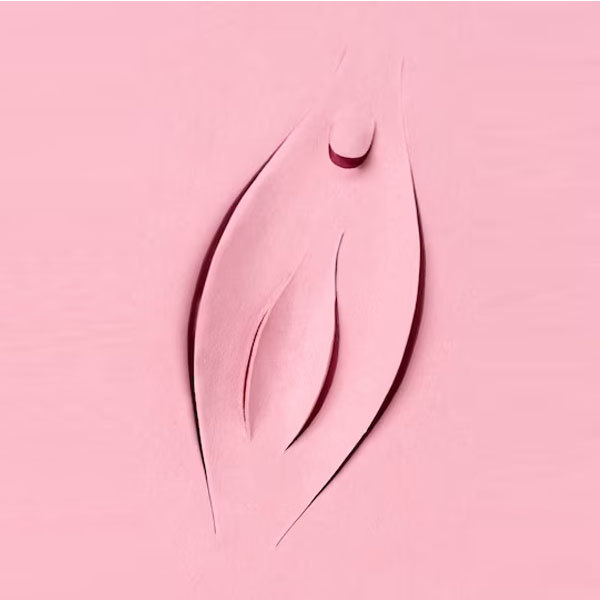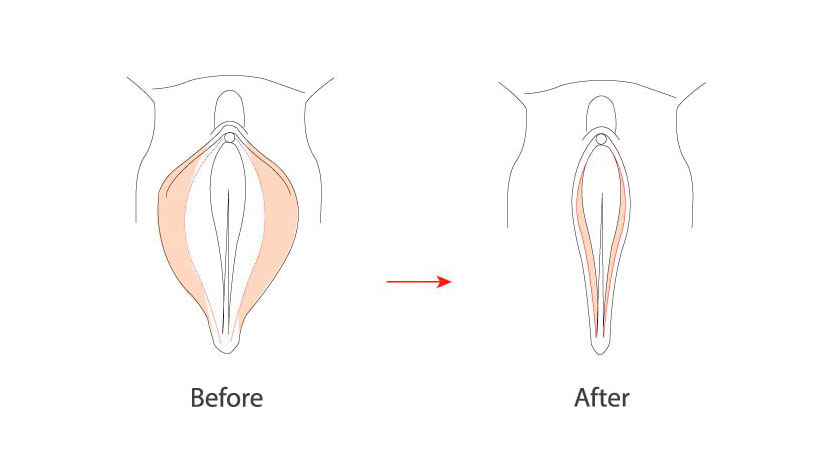Labiaplasty

Labiaplasty is a surgical intervention primarily performed to diminish the size of the labia minora, which are the delicate skin folds encircling the urethra and vagina. The presence of excess skin can lead to discomfort during various activities such as exercise, physical exertion, and sexual intercourse, as it may become twisted or pinched. Moreover, some individuals may opt for labiaplasty for aesthetic purposes, while others may consider it as part of gender-affirming surgery. Regardless of the reasons behind the procedure, labiaplasty aims to address both functional and cosmetic concerns related to the labia, ensuring improved comfort and overall well-being for those who choose to undergo it.
What is Labiaplasty?

Labiaplasty is a surgical procedure that offers the option to either reduce or increase the size of one's labia. The reasons for seeking this procedure can vary, ranging from addressing physical discomfort to being a part of gender-affirming surgery. Occasionally, individuals might consider it for cosmetic purposes, but it's essential to recognize that labia come in diverse shapes and sizes, and there's no standard or "normal" appearance.
Your labia consist of two sets of folds surrounding the vaginal opening. The outer folds, known as labia majora or "large lips," act as protective, fleshy coverings for the external genital organs and are typically adorned with pubic hair after puberty. On the other hand, the inner folds, called labia minora or "small lips," serve to protect the urethra's opening (where urine exits the body) and the vagina.
During a labiaplasty, depending on the specific purpose, the surgeon may perform either of the following:

- Reducing the size of the labia by removing some tissue.
- Enlarging the labia by injecting a filler material or fat.
- Reconstructing the labia using other tissue sources.
The goal of a labiaplasty is to enhance the comfort and well-being of the individual based on their unique circumstances and needs, promoting positive outcomes for those who decide to undergo the procedure.
Causes of an oversized labium:
- The onset of puberty may trigger a growth spurt in the labia, leading to changes in size and appearance.
- Hormonal fluctuations during menopause or other life stages can result in the thinning of the tissue in the labia majora.
- Pregnancy and the process of childbirth can impact the size and shape of the labia due to stretching and tissue changes.
- Changes in weight can also influence the appearance of the labia, as fluctuations in body fat distribution may affect the surrounding areas.
- Genetic factors play a significant role in determining the natural shape and size of an individual's labia, contributing to the wide variation in appearance among different people.
How is Labiaplasty procedure performed?

The preparation process involves cleansing your labia and the surrounding skin, and if needed, shaving the pubic area. Anaesthesia will be administered, and the type used will be discussed earlier during the planning stages. Choices include IV sedation with local anaesthesia or general anaesthesia, depending on your individual circumstances and preferences.
The surgical technique chosen by your provider will depend on the specific resizing or reshaping required for your labia (labia majora and/or labia minora). The procedures are typically performed using a scalpel, scissors, or laser.
For reduction procedures, two main approaches are employed:
- Trim procedure: Excess tissue is removed from the outer edge of one or both sides of your labia minora to achieve an even alignment with or inside the edges of your labia majora.
- Wedge procedure: A wedge or pie-shaped piece of tissue is removed from the inner areas of one or both sides of your labia minora, leaving the submucosa intact to maintain a natural appearance after suturing. The same technique applies if you are undergoing surgery to reduce your labia majora, wherein an inner portion of each labium is removed.
Your surgeon may have their preferred techniques based on their expertise and your desired outcome. Together, you and your surgeon will collaborate to determine the most suitable surgical approach to meet your goals and address any concerns.
For enlarging procedures of the labia majora, a small amount of fat can be taken from another part of your body through liposuction and injected into your labia majora. Alternatively, hyaluronic acid injections are another option.
In the context of gender-affirming surgery, your surgeon can use tissue from the penis to create your labia, as labiaplasty is just one step in the broader gender-affirming reconstructive process.
All incisions made during the procedures mentioned above will be closed with absorbable stitches that dissolve over time. The site will be covered with a surgical dressing to facilitate healing and protection.
Complications after the procedure:
While complications arising from labiaplasty are uncommon, they may include:
- Over-removal or under-removal of tissue, affecting the desired outcome and appearance.
- Potential for bleeding during or after the procedure.
- Bruising (hematoma) in the surgical area, which is typically temporary.
- Risk of infection, which can be managed with proper care and hygiene.
- In some cases, wound breakdown might occur, necessitating additional attention and care during the healing process.
- Scarring is a possibility, but modern surgical techniques aim to minimize visible scarring.
- Some individuals may experience ongoing pain, discomfort during sexual intercourse, or a temporary loss of sensitivity in the treated area. It's important to communicate any concerns to the healthcare provider for appropriate management.
As with any surgical procedure, patients should be fully informed about the potential risks and benefits, and it's essential to choose a skilled and experienced surgeon to minimize the likelihood of complications.
How much does Labiaplasty surgery cost?
The average cost of labiaplasty surgery in India is typically around 42,500 INR, with prices ranging between 42,500 and 50,000 INR, depending on various factors. However, it's important to note that the actual cost can vary based on individual circumstances and specific requirements.
One notable factor is that most medical insurance plans do not provide coverage for labiaplasty procedures. Nevertheless, many clinics offer alternative financing options to assist patients in managing the expenses.
During the recovery phase, patients may encounter mild side effects, which are entirely normal after the surgery. These side effects are usually manageable if the patient diligently adheres to all the prescribed post-operative guidelines throughout the recovery period. By following the recommended instructions, patients can promote a smoother and more comfortable healing process.
Frequently Asked Questions:
The recovery period for labiaplasty surgery varies from person to person, but most individuals can expect to resume normal daily activities within a week. However, it's essential to avoid strenuous exercise and sexual activity for about 4-6 weeks to allow sufficient healing.
Labiaplasty is carefully performed to preserve nerve endings and sensitive tissue, aiming to maintain sexual sensitivity. In many cases, patients report improved comfort and enhanced sexual experiences after recovery.
Yes, besides resizing the labia, labiaplasty can be combined with other procedures like clitoral hood reduction or monsplasty (pubic mound contouring) to achieve comprehensive aesthetic improvements based on individual preferences and goals.
During the consultation, the surgeon will discuss your concerns, expectations, and medical history. A physical examination will be conducted to determine the most suitable approach for your unique anatomy. This is also an opportunity to address any questions or doubts you may have about the procedure.
Yes, non-surgical options like laser treatments or radiofrequency can sometimes be considered for minor cosmetic enhancements in the labial area. However, it's essential to understand that these treatments may have limitations and may not provide the same degree of results as surgical labiaplasty. The most appropriate option will be determined after a thorough consultation with a qualified medical professional.
Procedure Time:
- 2-5 hours
Full Recovery:
- 6 weeks
Anaesthetic:
• General
Back to work:
• After 2 weeks
Duration of results:
• Permanent
Results:
• Noticeable within 2 weeks
Temporary risks & complications:
• May include soreness, bleeding, persistent pain, and infection
• *Individual results and reactions may vary.
